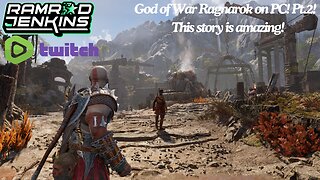Premium Only Content

Why Do Scientists Want To Know About Jupiter's Exact Look? Advance Exploration of Jupiter
Advance Exploration of Jupiter
The gas giant has 79 moons and is known as the 'king of the planets'. Jupiter is the largest planet in the solar system and the fifth planet from the sun. The gas giant has a long, rich, history of surprising scientists.
Named after the kind of the gods in Roman mythology this "king of the planets" is a stormy enigma shrouded in colorful clouds. Its most prominent and most famous storm, the Great Red Spot, is twice the width of Earth.
Why Do Scientists Want To Know About Jupiter's Exact Look?
Jupiter helped to revolutionize the way we saw the universe — and our place in it — in 1610 when Galileo discovered Jupiter's four large moons: Io, Europa, Ganymede, and Callisto. These observations were the first time that celestial bodies were seen circling an object other than Earth and supported the Copernican view that Earth was not the center of the universe.
Since 2016, the NASA spacecraft Juno has been investigating Jupiter and its moons.
Jupiter is more than twice as massive as all the other planets combined, according to NASA. Jupiter's immense volume could hold more than 1,300 Earths. If Jupiter were the size of a basketball, Earth would be the size of a grape.
Jupiter was probably the first planet to form in the solar system, made up of gasses left over from the formation of the sun. If the planet had been about 80 times more massive during its development, it would have actually become a star in its own right, according to NASA.
HOW FAR IS JUPITER FROM THE SUN?
On average, Jupiter orbits about 483,682,810 miles (778,412,020 kilometers) from the sun. That's 5.203 times farther than Earth's average distance from the sun.
At perihelion, when Jupiter is closest to the sun, the planet is 460,276,100 miles (740,742,600 km) away.
At aphelion or the farthest distance that Jupiter reaches from the sun, it is 507,089,500 miles (816,081,400 km) away.
Jupiter's atmosphere resembles that of the sun, made up mostly of hydrogen and helium. A helium-rich layer of fluid metallic hydrogen envelops a “fuzzy” or partially-dissolved core at the center of the planet.
#jupiterlook
#largestplanet
#gasplanet
#solarsystem
-
 2:38:12
2:38:12
Tundra Gaming Live
8 hours ago $3.26 earnedThe Worlds Okayest War Thunder Stream
37K1 -
 10:57
10:57
Tactical Advisor
11 hours agoNEW Compact Echelon | Springfield 4.0 C (FIRST LOOK)
72.3K1 -
 1:23:56
1:23:56
Glenn Greenwald
11 hours agoBiden Pardons Hunter After Months Of Vowing He Wouldn't; Plus: Biden's Career Imprisoning Crack Addicts | SYSTEM UPDATE #374
125K128 -
 1:28:16
1:28:16
Barry Cunningham
7 hours agoBANNED ON YOUTUBE SERIES: Inside The Border Crisis! Barry Cunningham Interview With Border Agent
62.4K87 -
 2:18:59
2:18:59
WeAreChange
9 hours agoCOUP ATTEMPT?! Dems Trying To Usurp Control Of Military In Move Against Trump
120K35 -
 1:17:41
1:17:41
Josh Pate's College Football Show
8 hours ago $2.85 earnedCFP Rankings Reaction | Conference Championship Predictions | New JP Poll | Portal Chaos Ahead
39.5K1 -
 59:27
59:27
The StoneZONE with Roger Stone
9 hours agoWill America’s Sheriffs Aid the Deportation of Violent Illegals? w/ Sheriff Richard Mack | StoneZONE
36.7K3 -
 4:18:52
4:18:52
RamrodJenkins
10 hours agoI am loving Rumble! Come on by and hang out!
23.6K6 -
 1:02:24
1:02:24
Patriots With Grit
10 hours agoHow To Influence Your State Leaders : The Will Of The People | Raj Doraisamy and Mason Weaver
18.3K -
 1:41:51
1:41:51
Redacted News
12 hours agoBREAKING! NEW DEEP STATE PLANS TO STOP TRUMP EXPOSED BY CONGRESS, BILL GATES VACCINE PLAN | REDACTED
225K529